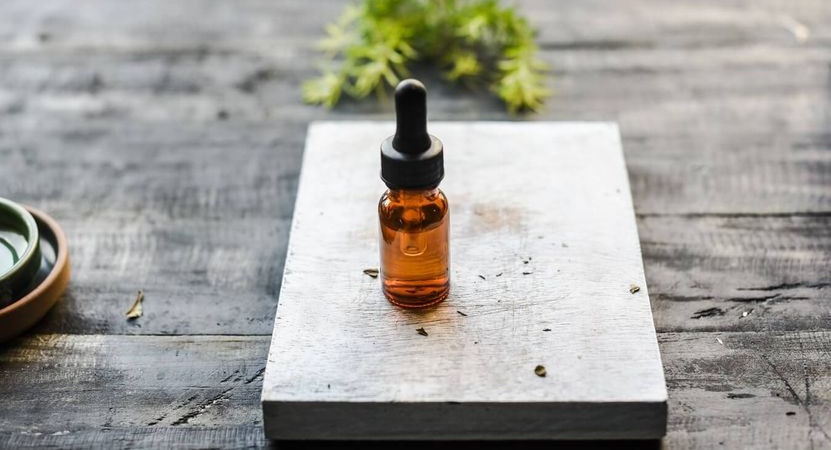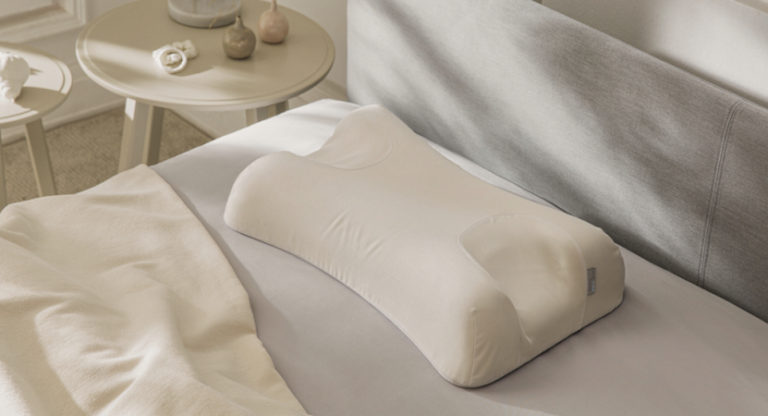Squalane: what is it? And where did it come from? We’re bringing all of your questions to the table, and dissecting squalane oil by piece so that we can all walk the better skincare journey together. Here’s everything you need to know:
In this article we discuss the following:
- What is Squalane?
- What is Squalane Oil?
- What are the Benefits of Squalane?
- Squalane Oil for Skin
- Squalane Oil for Acne
- Squalene Dangers
- How to Use Squalane Oil
- Best Squalane Products
- Conclusion
What is Squalane?
We don’t know about you, but it felt as though squalane popped up onto the skincare scene seemingly overnight. We went from having never even heard the word, to suddenly seeing and hearing it everywhere; there isn’t a skincare enthusiast who isn’t considering its potential benefit.
The squalane definition is a hydrogenated version of a lipid that usually occurs naturally in the skin. It’s being sold in serums and oils, intended for application on the face for the purpose of intense hydration.

What you need to keep in mind is that there is a difference between squalane vs squalene (note the difference in spelling). Squalene is the original form of lipid that is produced by the sebaceous glands naturally. How much squalene the body is able to produce will change with age, which is why skin becomes dryer and rougher as we get older.
In order for squalene to be used and sold as skincare products, the lipids need to be hydrogenated so that they become more stable molecules. Only then can the formula be smeared across the face! When squalene is hydrogenated, it is called squalane. This process also adds to the shelf life of the compounds.
So to be clear: it is squalane (with an ‘a’) that we will be referring to throughout this piece; the skin-ready formula.
What is Squalane Derived from?
As mentioned, squalene occurs naturally in the skin and production is diminished with age. Squalane for skin is not, however, derived from the squalene being produced by human glands; this would be virtually impossible.
Instead, squalene occurs naturally in a number of harvested foods including olives, sugarcane and rice bran. Squalene is also abundant in the livers of sharks, which is where most earlier squalane products were derived from. Thankfully these are few and far between now — leave the sharks alone!
Squalane manufacturers are now deriving almost all of their product from the harvested foods, and simply hydrogenating the squalene in order to stabilize it. Olive squalane is the most commonly used source, but other forms of vegetable squalene are found in amaranth seed and wheat germ.
If you are into clean beauty and skincare, always opt for plant-derived squalane and don’t support any brands that aren’t able to provide this seal of approval. Squalane pulled from shark liver juice is not something we ought to be using on our skin!
What is Squalane Oil?
100% squalane oil has the ability to mimic the skin’s natural squalene moisturizer, essentially tricking the skin into thinking it has a sufficient amount of this nutrient at all times. As you move through your 20s, 30s and 40s, squalene is diminished quite rapidly, and it becomes harder for the sebaceous glands to produce more. Our skin, as well as our hair and nails, all rely on squalene in some shape or form for their health, strength and density.
What’s wonderful about squalane oil is that it doesn’t ever look or feel greasy like regular oils. On the contrary, when applied to the skin it acts as a powerful emollient, and slides into every gap between skin cells in order to make your texture much smoother.
One of the major squalane oil benefits is its ability to seal in moisture, no matter the climate, weather or condition of the skin. There is a lightness to squalane oil; when coated over the face the product never feels heavy or congestive.
What are the Benefits of Squalane?
There is much back and forth within the skincare industry as to whether or not adding squalane to one’s daily routine is worth it. Furthermore, there is much research being conducted with regards to squalane’s effect on aging skin when applied topically.

One of the main squalane benefits is the formula’s ability to soothe highly inflamed/irritated skin. It has a calming, protective effect on the surface over which it is applied, so it is easy enough to conduct short term investigations in order to conclude these benefits as true or not.
A study was conducted in 2004 and featured 20 human participants; up until this point, squalane studies had only been conducted on animals. All of these participants were suffering from a chronic itching condition on the skin as a result of kidney disease.
Half of the participants were given a gel formula twice a day for two weeks. In the formula was water, aloe vera, vitamin E, and squalane. The other half of the participants were given a placebo gel.
After two weeks, it was clear that the subjects that had received the real gel formula had benefited greatly. Their itching had subsided, and skin texture had noticeably improved when compared to those who were under placebo treatment. This is somewhat testament to the healing benefits of squalane, however this research is also limited in that the formula had additional ingredients that may also have been responsible for the improvement.
One of the daily squalane skin benefits is its ability to balance oil production without clogging pores. The elasticity of the skin is improved in the process, which can lead to the slowing of aging over time.
Some people enjoy the visual effect of squalane on the skin. When applied topically to clean skin, squalane gives one that ‘dewey’ look that is so highly sought after these days. Beauty advocates have even started blending a few drops of squalane into their foundation, turning matte formulas to glossy, hydrating ones.
Squalane Oil for Acne
It’s clear there are many squalene benefits for skin, but something that is less distinguished is the effect of squalane on acne.
What you need to know about squalane for acne, is that it all comes down to how much sebum your skin is producing, and whether or not adding squalane to the mix will aggravate or soothe the area.
As mentioned, squalene is produced by our skin naturally via the sebaceous glands. This means it is a form of sebum, the oil and wax produced by our skin for regeneration, protection and hydration. People who suffer from acne are generally experiencing an excess of sebum production, which sees this wax-like substance clogging pores and creating general disarray.
Adding extra forms of sebum to the skin could further congest the pores, and simply fuel more breakouts. For this reason, many skin care enthusiasts recommend avoiding products containing squalane should an individual be suffering from active acne.
That being said, there is much talk around the aforementioned notion being nothing more than a skincare myth; and that squalane is absolutely suitable for all skin types, acne or none. Squalane is said to be gentle in the sense that it doesn’t oxidize as quickly as other products, and oxidization is what usually causes flare ups and acne.
In addition to this, not all acne is the result of an overproduction of sebum. Some forms of acne are strictly hormonal, whilst other forms, such as cystic acne, can occur when the lymphatic system is taking strain in the body and is unable to dispose of its own waste, so it turns to the skin. In these instances, there is little threat to providing the skin with extra squalane. In fact, it may even help increase elasticity, reducing your risk of scarring when the cysts and acne eventually heal.
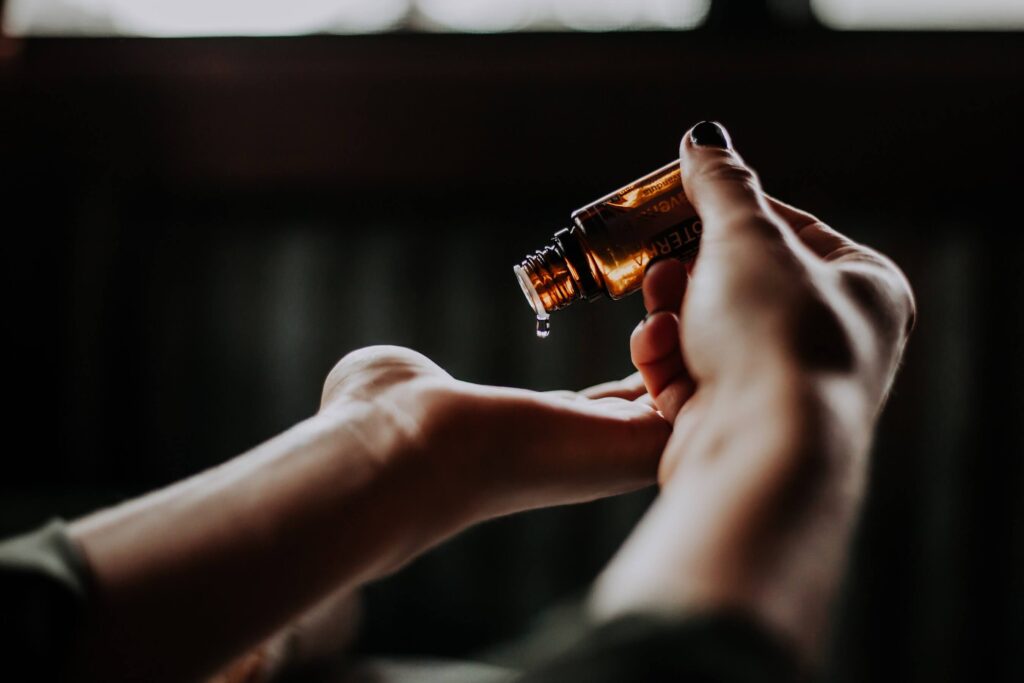
Does Squalane Help Eczema?
Since squalane has anti-inflammatory properties, it seems an obvious step to use it on inflamed, aggressive eczema. Can squalane help eczema? The answer is yes.
As we now know, squalane is an additional form of sebum, which is the wax/oil that hydrates and moisturizes our skin. Skin conditions such as eczema, psoriasis and dermatitis are all the result of intense dryness that the body is unable to correct on its own. Any relief from these conditions will come when there is relief from the dryness.
Anyone who has suffered from a dry skin condition, such as eczema, will know that they get the most benefit out of topically moisturizing the skin on a regular basis. This may not cure the ailment, but it does tend to reduce the severity even slightly.
Squalane derived from olives also happens to be high in antioxidants, and for this reason would be the best form of squalane to use on active eczema. Antioxidants work to combat the damage done to the skin after sitting with these conditions long term.
It is always recommended that one suffering from severe cases of eczema first consult with their health care provider before introducing a new product into their treatment plan. It is unlikely for squalane to react with other products/medications, but since the skin is such a sensitive organ it is better to be under the guidance of a professional.
Is Squalane Oil Good for Hair?
Squalene for skin is the tip of the iceberg when it comes to this versatile compound. Earlier we touched on the fact that squalene occurs naturally in the skin, as well as the hair and fingernails.
Squalane oil can be used directly on one’s hair to improve the overall condition and speed at which it grows. Naturally occurring squalene is responsible for all of these tasks, including general health of the hair and protection from breakage. Our hair is susceptible to dryness, breakage and poor health due to both internal and external factors, namely the weather, heat and aging.
Adding a squalane-rich oil into your hair care routine can have a rapid and visible effect on your hair’s appearance. That being said, squalane is not a replacement for adequate diet and good nutritional choices. Both of these are imperative to hair health, and can’t be substituted with an oil.
How to Use Squalane Oil on Hair
To use squalane oil on your hair, simply put a few drops in the palm of your hand and use your fingertips to massage the oil into your scalp, and down the strands. The more surface area you can cover, the better.
The most important zone is the direct scalp, however coating your ends in squalane will help with breakage and heat protection, so don’t neglect these zones either.
You can put the formula into your hair a few minutes before you take a shower to wash it out. Obviously, the longer the product can make physical contact the better, so some people find great benefit in applying the oil, and using a shower cap to cover their head as they sleep. This gives the squalane the time to penetrate quite deeply through the night.
The main issue with using squalane for hair is the price. We wouldn’t classify squalane as a luxury skincare product by any means; one can purchase products containing generous amounts of the compound for reasonable amounts.
Using squalane over your scalp and hair requires a significant amount of the product to be used, and even a decent sized bottle won’t last very long. It also takes a good few weeks of squalane use before one sees any improvement; so budget for extensive usage and repeated investment!
Squalene Dangers
Because of how natural and gentle these molecular compounds are, squalene side effects are few and far between. There is very little risk to using this as a skincare product, even for individuals with extremely sensitive skin.
However, even people who can use dense oils and active ingredients on their skin on a daily basis will tell you that new skincare products are always a bit of a lottery. There is no guarantee that because product A did not negatively affect you, that product B will do the same.
With regards to using squalane on skin, there is always risk of mild itching, redness or inflammation/swelling. In more severe events, one might experience a heating sensation on the skin, as though to be burning. There is also risk of small bumps appearing due to irritation from the squalane.
In order to ensure that squalane and your skin are going to be friends, start first with a small patch test on your neck or jawline. Apply only this area with the product, and allow it to sit for a few hours. If a reaction is going to occur, it will be sometime during this time frame, and you’ll save yourself a full face of distressed skin.
What you also need to take note of are any products that are not 100% squalane in compound. Some come in the form of serums or face oils, and they have accompanying ingredients that could be reactive to your skin. For example, if you experience redness upon application, it may not be due to the squalane at all, but rather the vitamin E, seed oils, or acids used in the formula makeup.
Does Squalane Oil Cause Breakouts?
We took an in-depth look at this issue earlier in this article, and considered how since squalane is a form of sebum, it may result in the clogging of pores and thus breakouts.
The reality is that squalane oil does not cause breakouts; the formula is lighter and more pliable than any other oil in the skincare market, thus congestion of pores is highly unlikely. In the same breath, not all acne is the result of overproduction of sebum, so each case will be extremely unique.
On the contrary, squalane may promote elasticity in the skin, which will actually help prevent it from scarring when breakouts do occur.
As we also mentioned, the skin is a tumultuous organ, and one can never really say for sure what will and will not occur when a new product is introduced. If you’ve never suffered from breakouts or acne in your life, and suddenly are experiencing them after starting the use of squalane, you should probably cease using the product immediately.
This means that an illusion of the overproduction of sebum has indeed been generated, and the skin has become reactive. While this is highly unlikely, it is not impossible.
Can You be Allergic to Squalane?
Technically speaking, no one is allergic to squalane in its non hydrogenated form, because all human beings produce squalene naturally throughout their lives. That being said, hydrogenating the squalene molecules does change them, and there is no ruling out the possibility of allergic reaction when applying this form of the compound topically onto the skin.
The aforementioned reactions, including redness, swelling and bumps, would be considered allergies to one or more of the ingredients found in your squalane based skincare product.
If you suspect you may be allergic to squalane, it helps to get a pure form of the compound (100% squalane) to do a patch test with. This will help you to rule out squalane as the cause, and not attribute the reaction to and of the other ingredients in the formula.
Never use your face for an allergy test, rather resort to thin skin elsewhere on the body, such as your wrist or décolleté.
How to Use Squalane Oil
How and when you use your squalane oil will differ depending on your unique skincare regime. We’re going to break it down into the two most popular variations: with makeup and without.
Using Squalane with Makeup
One of the most visible benefits of fresh squalane on the skin, is the dewy, glow effect it gives the user. Applying your squalane with the rest of your skincare products may result in this immediate effect being lost.
- Cleanse your face as you usually would
- Apply any toners or serums that are part of your typical morning routine
- Finish off with moisturizer and apply your daily SPF
- Put your desired amount of foundation on the top of your hand, and drop your daily dose of squalane into the mixture
- Use a foundation brush to apply the mix over your face, allowing the squalane and foundation to blend naturally as you go along
Using Squalane without Makeup
If you don’t apply foundation to your skin daily, you can get away with including squalane in your regular routine, after your serums and before your moisturizer.
The process is as follows:
- Cleanse your face as you usually would
- Apply all toners and serums that are part of your typical morning routine
- Apply a few drops of squalane oil to your face and massage thoroughly
- Finish off with your daily moisturizer, and don’t forget to apply your SPF as needed
If you are seeking a highly dewy look, switch steps 3 and 4 so that the squalane is applied last. That way, it will be the most fresh product on your face and how you’ll greet the day.
Best Squalane Products
Best Squalane Oil
The Ordinary 100% Plant-Derived Squalane
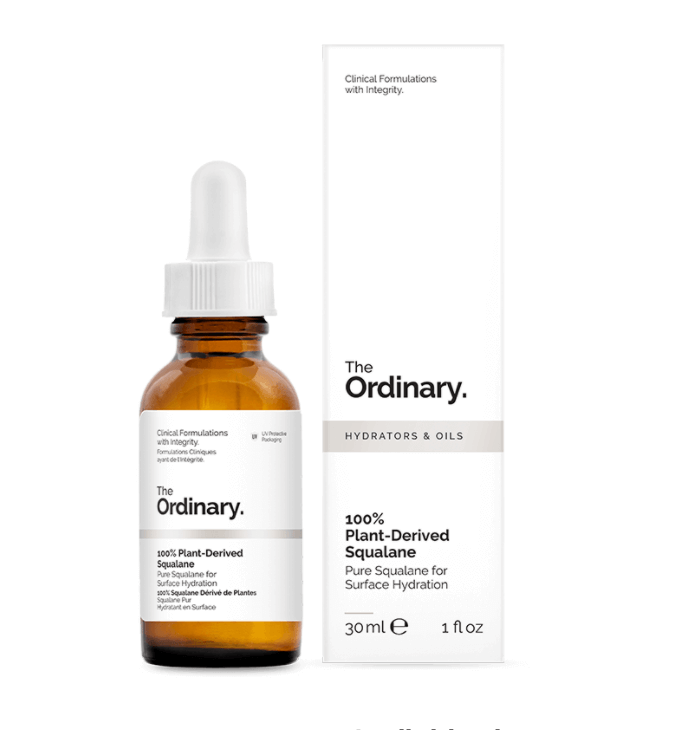
There have been squalane EWG reviews conducted on a number of different brands who have brought this trendy formula to the global market. At present, the top squalane oil is made by The Ordinary, a Canadian brand leading the revolution in accessible, clean, and affordable, skincare.
The Ordinary squalane is free of alcohols, nuts, silicones, glutens and is also cruelty free. The squalane is 100% plant derived, and the formulation is pure; there are no additional ingredients in this product. Long term use of The Ordinary’s squalane can lead to repair of dermal suppleness and intense hydration.
The best thing about squalane oil ordinary is the unbeatable price. A 30ml bottle retails for around $7, making it the most affordable squalane solution on the market. Order online or find your nearest supplier of The Ordinary skincare products; buy one or two other products while you’re at it — you won’t regret it.
Note: The Ordinary also offers a hemi squalane, made from feedstock.
Best Squalane Cleanser
The Ordinary Squalane Cleanser
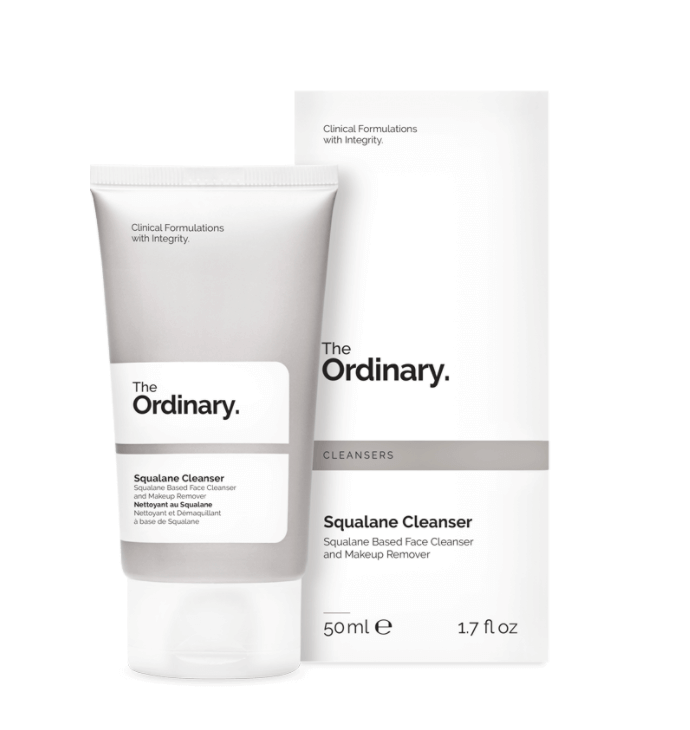
We know that The Ordinary plant derived squalane is the superior choice when looking to enter the squalane skincare market, so it’s no surprise that their cleanser is equally as impressive.
The Ordinary squalane cleanser retails for the same amount as the 30ml oil does. It’s a long-lasting product that offers a deep cleanse as well as removal of makeup.
The formula is a combination of squalane and lipophilic esters. It has a balm-like consistency and applies well across wet skin. At first, you might feel that this is a particularly oily cleanser, but you’ll soon see that the oil is merely an illusion, and it’s simply squalane being left behind. Don’t try to scrub it off! The longer these molecules can stay in the skin, the better.
The squalane cleanser is gentle enough to use twice a day alongside all of your other skincare products.
Best Squalane Lip Balm
Biossance Squalane + Rose Vegan Lip Balm
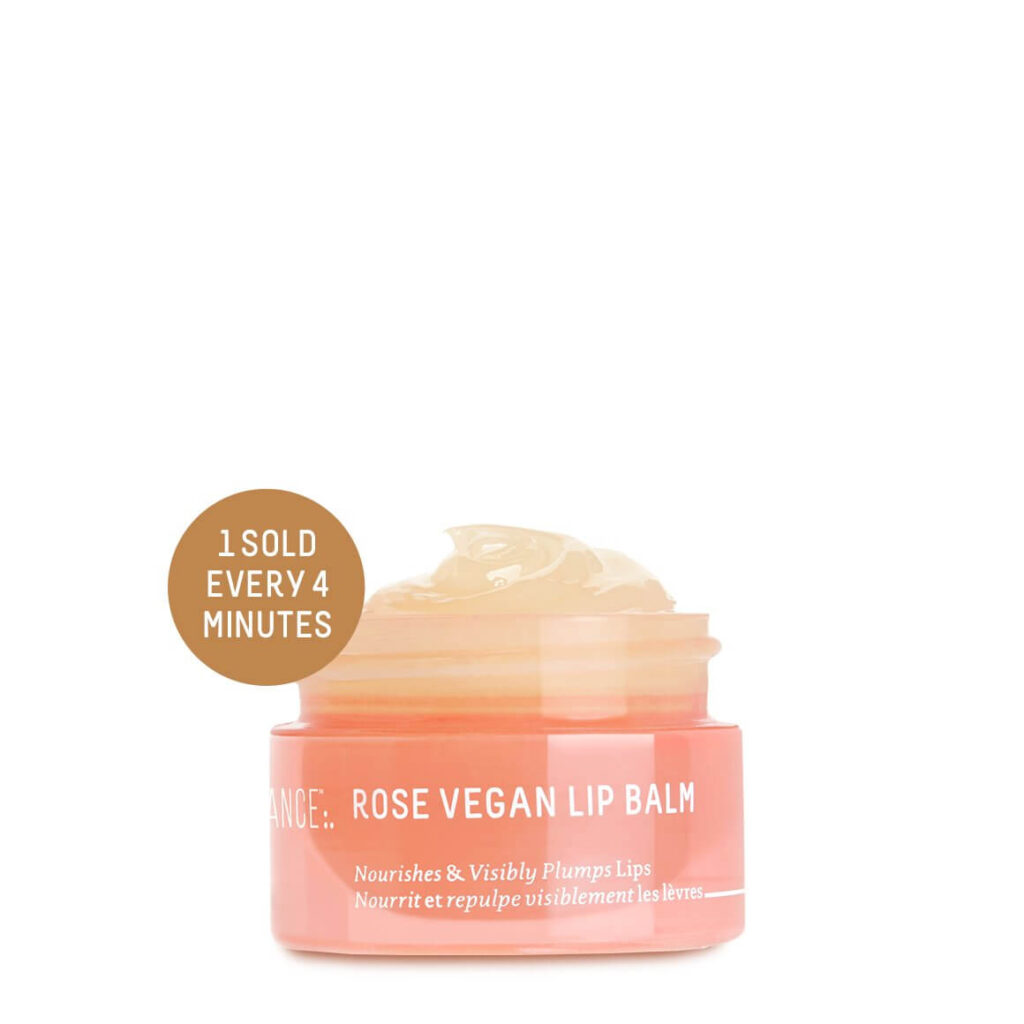
One of the most underrated yet best squalane products to have in your collection is a squalane based lip balm.
Our favorite one is made by a fantastic brand called Biossance. They have been at the forefront of the squalane movement since the beginning, and while their products don’t come cheap, they are extremely effective.
This Biossance squalane lip balm is vegan, cruelty free, and packed with nutrients. It contains generous amounts of hyaluronic acid to moisturize in addition to the squalane, as well as rose oil and wakame algae that work to plum the lips.
The result? Youthful looking lips that you’ll only believe when you see. There is a reason that one of these lip balms is sold every 4 minutes around the world; there is also a reason it costs $18 a pop!
Best Squalane Cream
Kiehls Creme de Corps
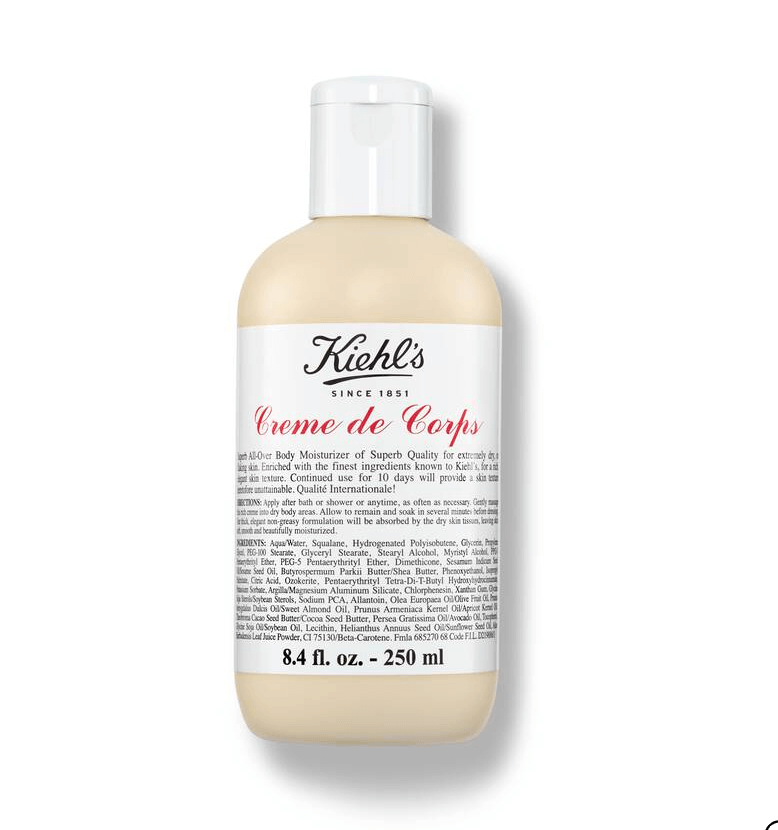
The Creme de Corps range by Kiehls is a line of versatile creams that can be used all over the body.
The key ingredients in this range are cocoa butter, beta carotene and squalane. The formula was perfected back in the 1980s, before squalane was even on the radar of most skincare enthusiasts.
The cream is non-greasy, which we love and appreciate. It leaves skin elegantly soft; the kind of soft where you notice it on yourself as opposed to someone else complimenting you. The formula is also gentle enough for all skin types; even those who are semi-reactive to 100% squalane will likely be just fine using this diluted solution.
What we love most about this cream is that Kiehls sells it in 5 different sized bottles to suit your distribution needs. We’d start off with a more manageable size, and if you like it you can invest in the 1 liter pump bottle come your next purchase.
Best Squalane Body Oil
Biossance 100% Squalane Oil
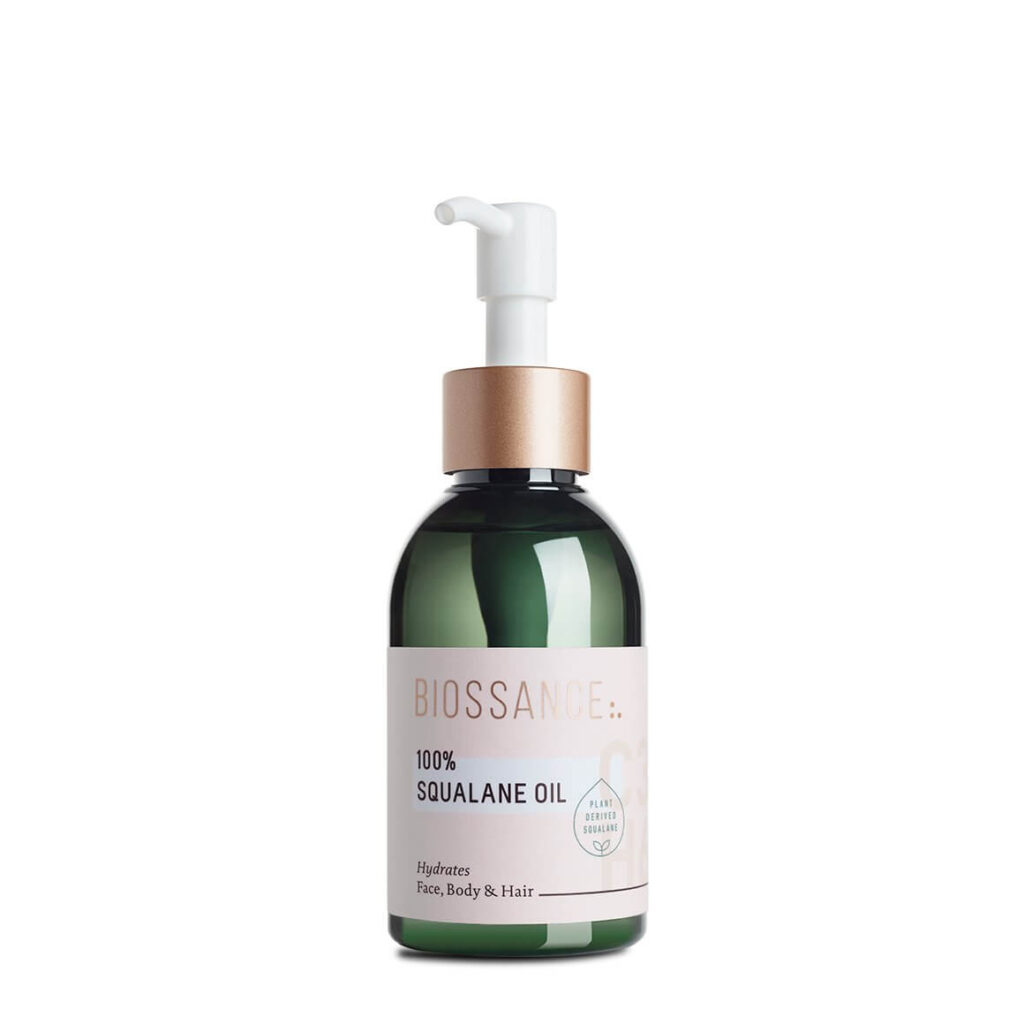
Another product worth noting is the Biossance squalane oil intended for all-over body use.
Biossance derives their squalane from renewable Brazilian sugarcane, which is not common in the commercial market. By using this plant-based form of squalane, Biossance are saving 2 million sharks from being culled each year.
The Biossance brand is totally vegan and cruelty free; there isn’t a more conscious form of squalane on the market. We also love that this particular body cream doesn’t contain any parabens, fragrances or toxins. It is instantly hydrating, and healthier looking skin is attainable within just a few days of using this product.
The 100ml bottle retails for $32, and it goes a long way. If you are looking to get more from your buck, opt for the jumbo size which is 200ml at just $40. Biossance also offers a travel sized bottle in 12ml, retailing for a mere $8.
Best Squalane Mask
Biossance Squalane + Glycolic Renewal Mask
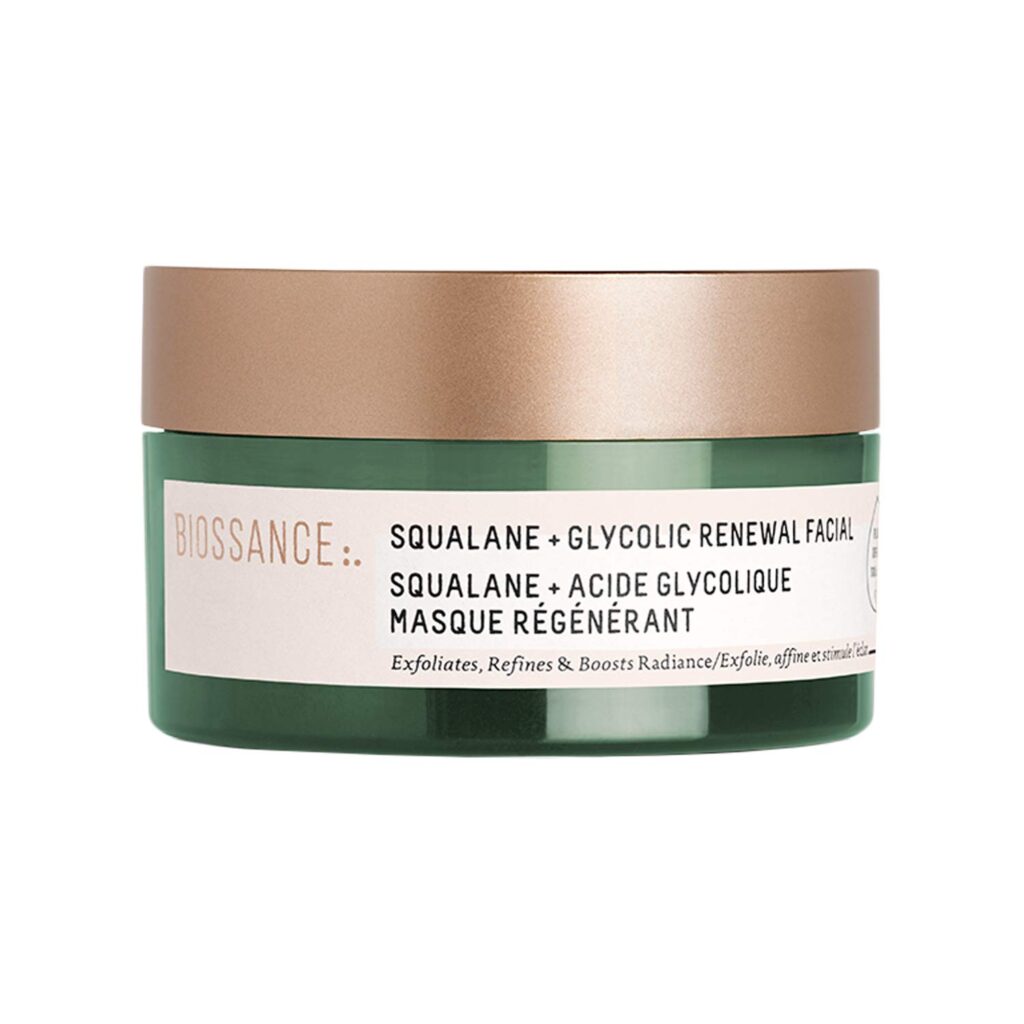
The Biossance range is extensive, and they offer everything from serums to cleansers to masks. The Biossance squalane mask comes in a small pot, and the formula goes a long way.
You only need to use a minuscule amount of the mask on your face, twice a week. It works its magic in just 10 minutes, and is not painful, nor will it pull at your skin.
In addition to squalane, the product does contain some AHAs. These can make the skin more sensitive to UV rays, so it is important that you are using a daily sunscreen when making use of this face mask. Conveniently, Biossance offers a squalane based sunscreen to slide perfectly into your routine.
The mask costs a whopping $68. If you want to test the waters first, opt for the travel size at just $28.
Best Squalane Moisturizer
Laneige Water Bank Moisture Cream
Laneige is another skincare brand who were using squalane before it was cool. Their Water Bank Moisture Cream is one of the best moisturizers on the market, offering a form of natural squalane derived from olives.
The cream also features glasswort and quinoa extracts, and in the presence of squalane, the two become hydrating miracles. Extremely dry skin can be treated in just a few days using Laneige’s formula.
A 50ml tub will set you back $42, but a little goes a long way when it comes to this particular face cream. Use sparingly, twice a day!
In addition to the Water Bank cream, Laneige also has a fantastic serum, eye cream and sleeping mask on offer, all containing squalane extracts. The brand is slowly but surely gaining traction within the skincare world, and we believe this will be one to watch in the coming years.
Did You Enjoy This Article?
If you enjoyed this article, you might also like our other skincare articles such as Top 5 Vitamins for Acne, Essential Oils for Skin, and Top 17 Vitamin C Serum.

